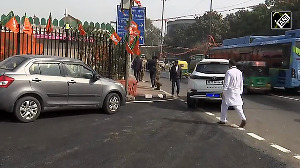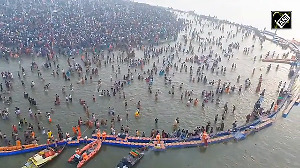The most expensive cup of joe, in the minds of many coffee drinkers, is a $4 coffee at Starbucks. Perhaps a half-caf soy almond latte prepared by a favorite barista.
But for serious coffee connoisseurs, people who are looking for a world-class drink rather than a 'gourmet' cup, the top fare is made from the highest-quality beans in the world. The beans come from very specific regions and are prized for their unique characteristics. Cultivated on small farms, they are coddled by farmers who care more about quality than quantity.
You wouldn't dare add milk or sugar to coffee of this caliber--it would compete with the beans' natural sweetness, and distinct flavors and aromas.
Slideshows:
Most expensive coffee
Most expensive handbags
Most expensive women's shoes
Such top-quality coffees are rare--and prices for them are accordingly high. Superior beans command retail prices of over $100 per pound in what the Specialty Coffee Association of America, a Long Beach, Calif.-based trade association, describes as a $11 billion-plus specialty coffee market.
We have searched the specialty coffee market for the priciest coffee in the world--not the most expensive cups of coffee, which can vary by a matter of cents--but the priciest specialty beans.
They include such products as Hacienda la Esmeralda Geisha from Panama, which made news at the end of May when it set an auction record of $50.25 per pound. Praised for its fruit and floral flavors, it retails for more than $100 per pound. There are also novelty coffees, whose prices are influenced not just by quality, but by the romance or uniqueness of their origins.
St. Helena coffee, for instance, is a high-quality coffee grown on the remote South Atlantic island to which Napoleon Bonaparte was exiled in 1815. Then there's the Indonesian Kopi Luwak, a coffee that is only roasted after it's been eaten and excreted by a palm civet.
The US coffee market looks very different today than it did a half-century ago. From the 1950s to the 1990s, a few small roasters managed to obtain high-quality beans for select markets like New York's Little Italy or Berkeley, Calif. But most coffee was sold in cans, and consumers were more concerned with price and consistency than taste.
In 1962, the US reached a peak in per capita coffee consumption: The average person was drinking more than three cups of murky brown swill per day. Despite the proliferation of Starbucks, which was founded in 1971, today the average American drinks less than two cups of coffee per day. That coffee is significantly tastier, however.
Coffee evangelists have long sought to elevate coffee above commodity status. For years, great coffees were blended away, used to make fairly uniform-tasting brews. Little recognition was given to the individual farmer, and the unique flavor profiles of different varieties of coffees, or coffees from different micro-climates, were ignored.
With the specialty coffee boom of the '90s, great beans are now making a more direct journey from crop to cup. Specialty roasters and retailers buy beans directly from the farmers, paying premiums that encourage them to improve growing methods and produce superior beans. The beans are transported and carefully roasted before being sold to consumers. "While you cannot make a mediocre coffee good during the roasting process, you can ruin a great coffee during roasting," said Mike Ferguson of SCAA.
Slideshows:
Most expensive jeans
Most expensive lingerie
Most expensive cowboy boots
George Howell, founder of the George Howell Coffee Company and its Terroir Coffee brand based in Acton, Mass, emphasises that coffee is a "noble beverage," worthy of the same respect as fine wine. A 30-year veteran of the coffee industry, he has pushed to decommoditize coffee.
After creating models of economic sustainability for coffee farmers for both the United Nations and the International Coffee Organization, Howell co-founded the Cup Of Excellence program, among the most esteemed award programs for coffees. The strict competition selects the best coffee produced in a country for a particular year. The winners are auctioned off online.
Many of the most expensive coffees in the world are Cup of Excellence winners. In compiling our rankings, we examined auction prices for green (unroasted) beans and spoke to roasters and trade organizations around the country. Only single origin coffees were considered, which means that the beans come from one place. Blends were not considered, because they can contain inferior beans from unidentified sources.
In general, we ranked the coffees by retail price. One exception is El Injerto from the Huehuetenango region of Guatemala, which is not yet available but is expected to retail at more than $50 per pound. The second is Fazenda Santa Ines from Brazil, which has already been bought up and is only available by the cup; we ranked it by its auction price of nearly $50 per pound. We rounded all figures to the nearest dollar.
As expensive as these coffees are, when compared with wine, the best coffee beans are a relative bargain.
"If you pay $10 per pound for the coffee you brew at home, a cup of coffee costs less than a Coke from a 12-pack," Howell points out. Even if you pay twice as much for a pound of beans, an entire pot of coffee will still cost less than a glass of wine from a $10 bottle.
So even at these prices, feel free to drink up.
Slideshow: Best-selling makeup







 © 2025
© 2025